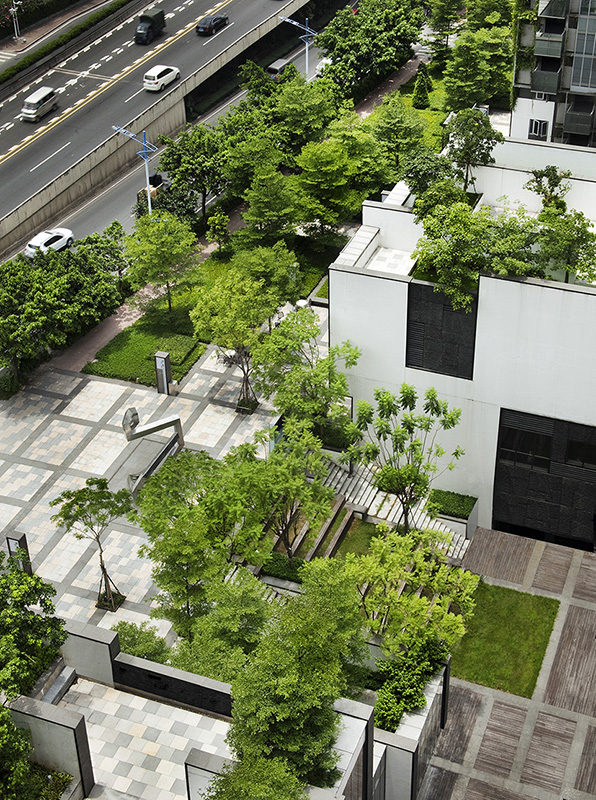The project is a mixed-use development with residential and commercial components in Baiyun District of Guangzhou, China. Located adjacent to the lushly vegetated Baiyun Mountain, the site is privileged with accessible natural scenery, which became the principle driving force of design, shaping the building form and unit arrangement.
To capitalise on the view, the building is planned as an “U” shape to maximise direct vistas towards the landscape. Accessible sky gardens every 4 floors created platforms for social interaction and bring nature closer to residents. Full height green walls sandwich the sky garden, defining the green core of the towers. The landscaped roofs of the low-rise block and commercial buildings maximise green coverage on site and create elevated grounds for activities. Greenery is further introduced to the residents through planter boxes on the building facade that are maintained from the units. A lattice framework weaves together the facade elements of bay window, planter box and balcony, providing the structure on which greenery can proliferate, eventually knitting a variegated natural facade for the buildings.
The commercial component of the development on the ground level is broken up for a more human scale, compatible with typical retail establishments prevalent in Guangzhou. A sunken plaza is introduced to create a quieter gathering space screened off from the noise of the main roads. Driving along the Baiyun Highway, the Baiyun Mixed Development unfolds in front of the spectator’s eyes, with multi level greenery that echoes the lush greenery of the Baiyun Mountain ranges opposite. The organic elements in the project are bold statements against the cookie-cutter style of residential developments in China, and hopefully can help to propel a new wave of sustainable architecture in the country.






















